Temporary exhibition of the Asturias Cycle Tour (ENG-ESP)
A journey through the history of cycling and a reunion with my adolescence.
English
A week ago the Tour of Asturias, a 3-day cycling race that has been held for 100 years in the region where I live, took place.
In this post, I am not going to talk about the current edition, but about a temporary exhibition related to the celebration of the centenary of this sporting event that is on display in the Los Prados shopping center in Oviedo.
After passing through the revolving doors that give access to the shopping centre in the main hall, I saw a collection of jerseys and bicycles related to the 100 years of the competition along with relevant information about this long-lived competition.
Cycling in the first half of the 20th century
The first part of the exhibition focuses on the first years of this centenary race, where the amateur beginnings of the race are recounted and how, due to the different wars that ravaged Europe and also the Spanish Civil War, there were many editions that could not be held.
It was very nice to discover an Armor bicycle from 1925.
And being very striking, it had a kind of headlight, a far cry from today's racing bicycles.
Another of the bicycles on display from the 1920s is a very well maintained Alcyon bicycle.
And also an Orbea bicycle from the 1940s, albeit with some damage.
As for the leotards on display, I found the jersey of the Cacaolat team and the La Casera-Bahamontes team very striking. They were made of wool. Fabrics very different from today's jerseys.
The 60s and 70s
One of those mythical cycling teams of the 60s and 70s was the KAS team.
I remember fondly when my grandfather used to tell me stories about this cycling team and its exploits during the Tour of Spain, the Tour of Italy and the Tour de France.
From this period in the exhibition there were jerseys from other teams such as Licor Karpy and also from the Bianchi team.
And also a Peugeot violet from 1958.
I'm sure many would find it strange to see a bike from the French car manufacturer. But it turns out that Peugeot was one of the big names in cycling in the mid-20th century and even today they have a division of bicycles of all kinds.
The 80s and 90s
For me the golden age of cycling and also for those who created the information panel for the Tour of Asturias.
From these two decades there are on display jerseys of the leading teams of these two decades, such as the Reynolds team and the BH team.
There are also several bicycles from these decades on display, in particular, two bicycles that I will tell you about next, which made me very excited.
The first of these bicycles is the 1992 Pinarello bicycle from the Banesto team, that great team that included the winner of 5 consecutive Tours, none other than the great Miguel Indurain.
But, strangely enough, being Spanish and a cycling fan, I was a fervent follower of the Swiss Tony Rominger and I was absolutely thrilled to be in front of one of his time trial bikes.
It was very striking the different size of the front wheel compared to the classic lenticular rear wheel that this cyclist used to use to get a better aerodynamic coupling in this type of stages.
Current era
There were no bikes from the current era on display, but there were several maillots from current teams such as Movistar Team, Emerates Team and Arkea. In particular, the maillots of some of the winners of the last editions of the Vuelta Asturias.
From the yellow jersey to the blue jersey and Winners' Statistics
The Tour of Asturias, like other tours in its beginnings, copied the format of the Tour de France's yellow jersey.
And for other minor classifications, such as the mountain classification or the points classification, they distinguished the leaders with different coloured jerseys.
I have seen the yellow jersey used in different shades during the different years of the race.
But in recent years the jersey to distinguish the leader of the race has turned to blue. The colour of the flag of Asturias and I think it has been a good decision.
Other information panels in the exhibition are related to statistics, indicating those cyclists who have won the race on more than one occasion and also the different nationalities that have won this tough cycling event.
I hope you like this cycling exhibition related to the Tour of Asturias.
Spanish
Hace una semana se disputó la vuelta ciclista Asturias, prueba ciclista de 3 días que se disputa desde hace 100 años en la región en la que vivo.
No os voy a hablar en este post de la edición actual, sino de una exposición temporal relacionada con la celebración del centenario de esta prueba deportiva que se encuentra expuesta en el centro comercial Los Prados, en Oviedo.
Tras pasar las puertas giratorias que dan acceso al centro comercial en el hall principal, he visto una colección de maillots y bicicletas relacionadas con los 100 años de la competición junto con información relevante de esta longeva competición.
El ciclismo de la primera mitad del siglo XX
La primera parte de la exposición está centrada en los primeros años de esta centenaria carrera, donde se cuentan los inicios amateur de la carrera y cómo debido a las distintas guerras que asolaron Europa y también la guerra civil española, hubo multitud de ediciones que no pudieron realizarse.
Resultó muy agradable descubrir una bicicleta Armor del año 1925.
Y siendo muy llamativo, presentaba una especie de foco delantero, distante mucho de las bicicletas de competición actuales.
Otra de las bicicletas expuestas de los años 20 es una mejor cuidada bicicleta Alcyon.
Y también una bicicleta Orbea de los años 40, aunque con algún desperfecto.
En cuanto a los maillots expuestos, me resultó muy llamativos los maillots del equipo Cacaolat y del equipo La Casera- Bahamontes. Los cuales eran de lana. Tejidos muy diferentes a los actuales maillots.
Años 60-70
Uno de esos equipos míticos del ciclismo de los años 60 y 70 fue el equipo KAS. Recuerdo con cariño cuando mi abuelo me contaba historias sobre este equipo ciclista y sus gestas durante la vuelta España, giro de Italia y tour de Francia.
De esta época en la exposición había virios maillots de otros equipos como Licor Karpy y también del equipo Bianchi.
Y también una violeta Peugeot de 1958.
Seguro que a mucho les resultará raro ver una bicicleta del fabricante de vehículos francés. Pero resulta que Peugeot fue uno de los grandes del ciclismo de mitad de siglo XX y aún hoy tienen una división de bicicletas de todo tipo.
Años 80-90
Para mí la edad de oro del ciclismo y también para los que elaboraron el panel informativo de la vuelta a Asturias.
De estas dos décadas hay expuestos maillots de equipos punteros de estas dos décadas como fue el equipo Reynolds y el equipo BH.
También hay expuestas varias bicicletas de estas décadas, en concreto, dos bicicletas de las que os hablaré a continuación me hicieron una gran ilusión.
La primera de esas bicicletas historias es la bicicleta Pinarello de 1992 del equipo Banesto, aquel gran equipo en el que militaba el ganador de 5 tours consecutivos que no es otro que el gran Miguel Indurain.
Pero, aunque resulte raro, siendo yo español y aficionado al ciclismo, yo era un ferviente seguidor del suizo Tony Rominger y mi emoción fue absoluta al estar delante de una de sus bicicletas de contrarreloj.
Resultando muy llamativo el diferente tamaño de rueda delantera respecto a la clásica rueda lenticular trasera que solía emplear este ciclista para conseguir un mayor acople aerodinámico en este tipo de etapas.
Época Actual
De la época actual no había bicicletas expuestas, pero sí varios maillots de equipos actuales como es el equipo Movistar, el equipo Emerates y Arkea. En concreto, los maillots de algunos de los ganadores de las últimas ediciones de la Vuelta Asturias.
Del maillot amarillo al maillot azul y estadística de ganadores.
La vuelta Asturias, como otras vueltas en sus inicios, copiaron el formato del maillot amarillo del tour de Francia.
Y para otras clasificaciones menores, como la clasificación de la montaña o por puntos, distinguían a los líderes con maillots de colores diferentes.
El amarillo he podido ver que ha sido usado en distintas tonalidades durante los diferentes años de la celebración de la carrera.
Pero en los últimos años el maillot para distinguir al líder de la carrera se ha tornado a color azul. Color de la bandera de Asturias y creo que ha sido una buena decisión.
Otros paneles informativos que hay en la exposición están relacionados con la estadística, indicando aquellos ciclistas que han ganado en más de una ocasión la carrera y también las distintas nacionalidades que han ganado esta dura prueba ciclista.
Espero que les guste esta exposición ciclista relacionada con la vuelta a Asturias.

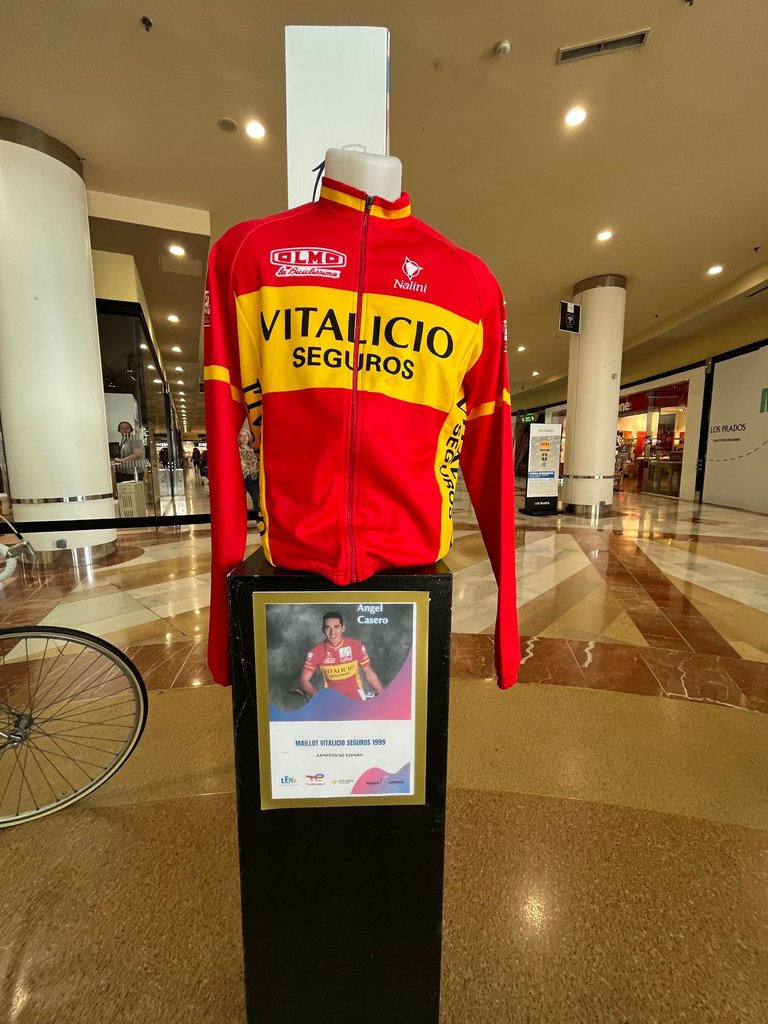
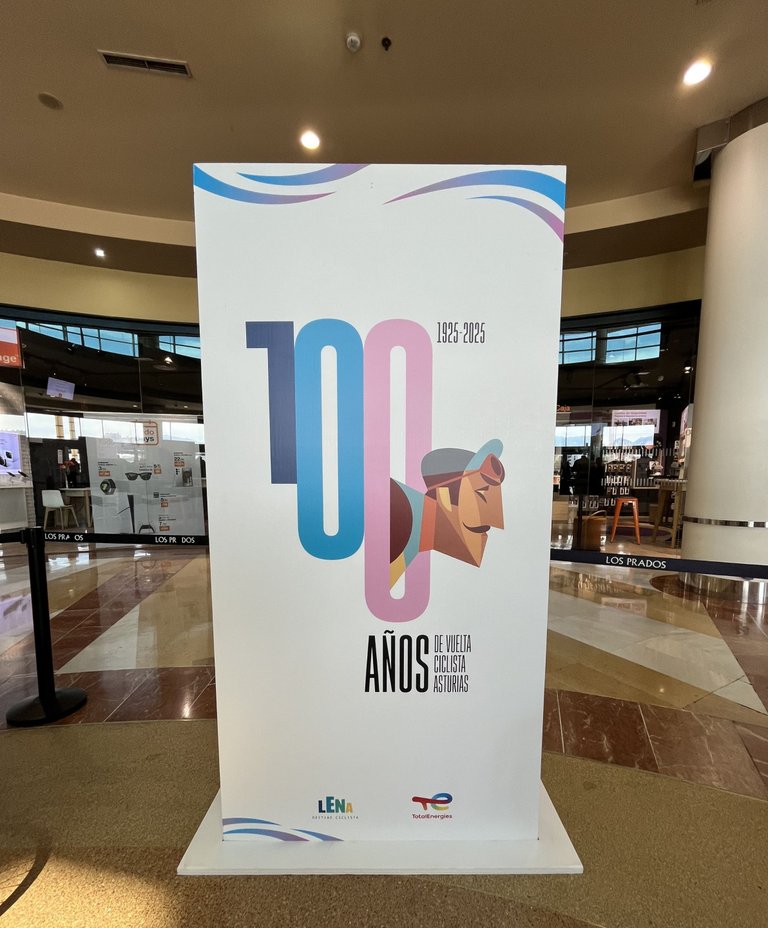

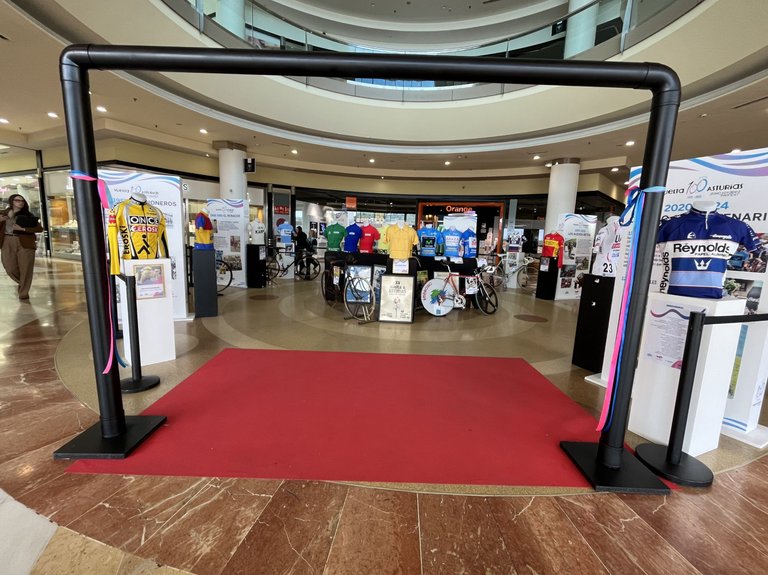

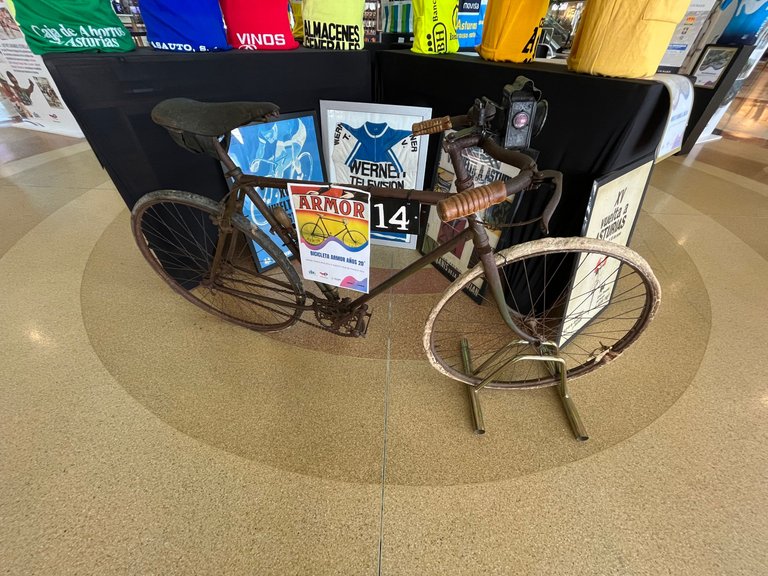
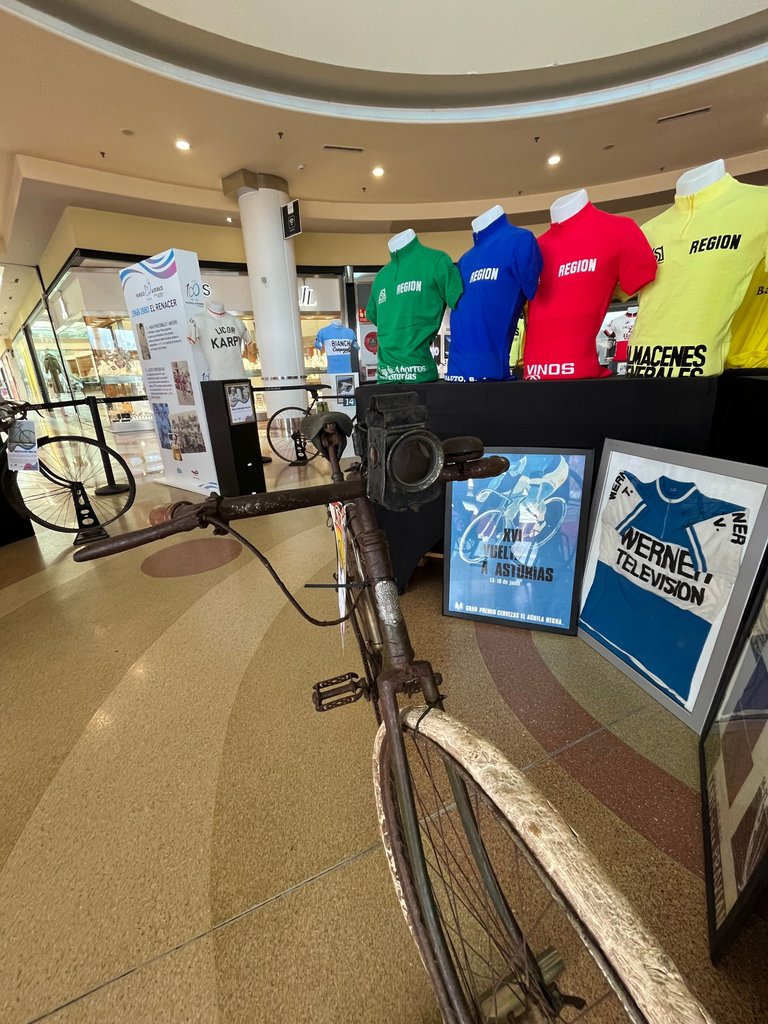
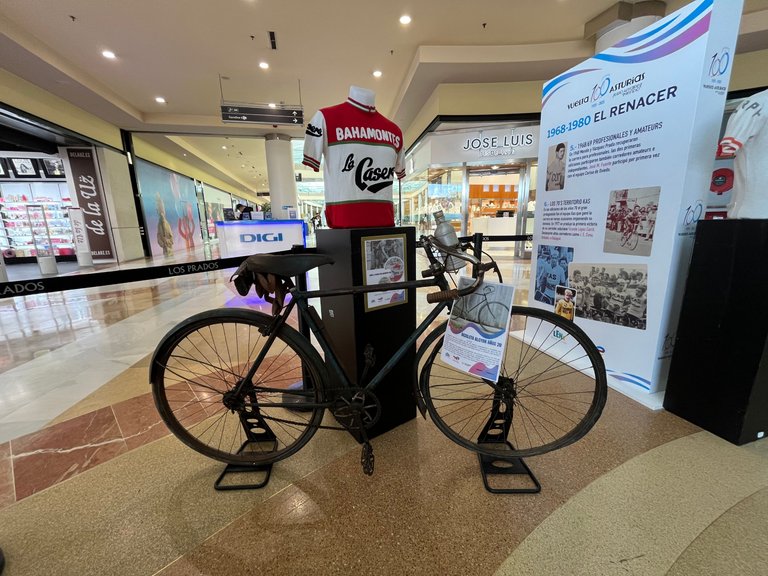
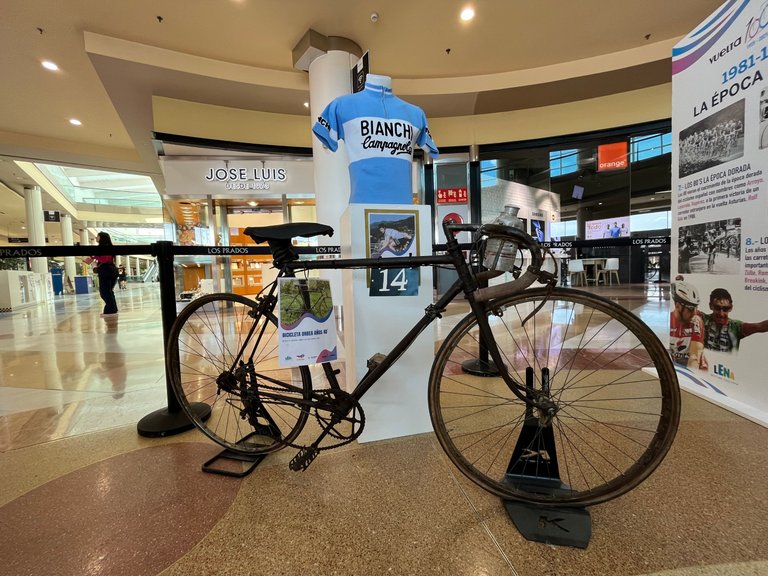
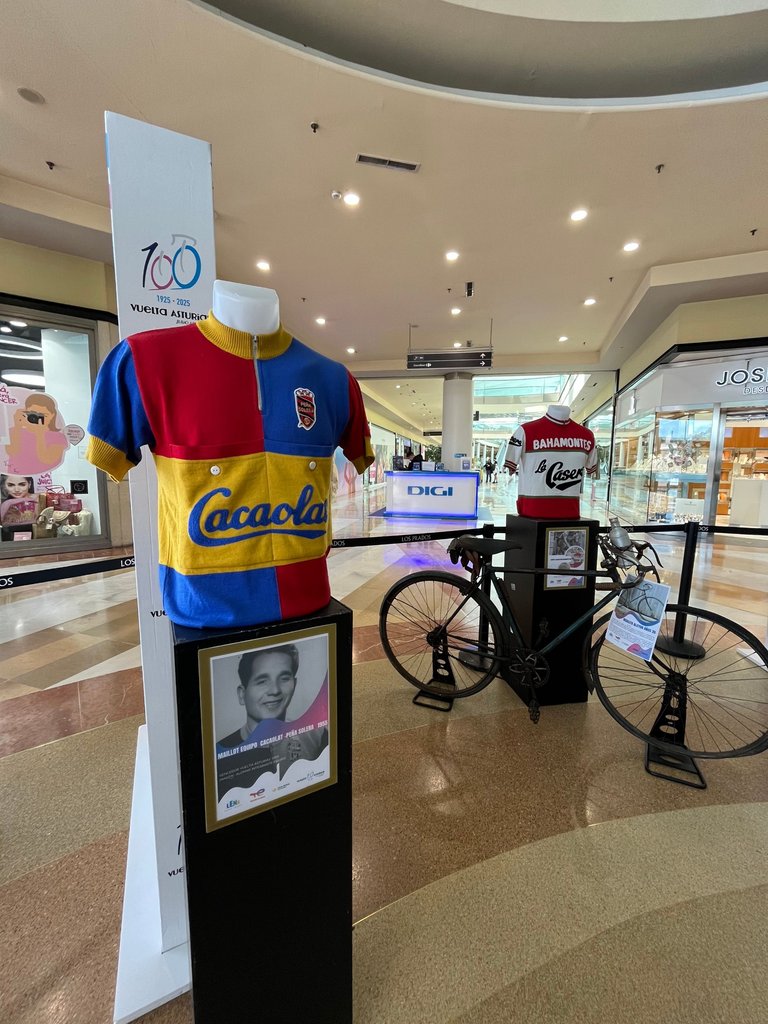
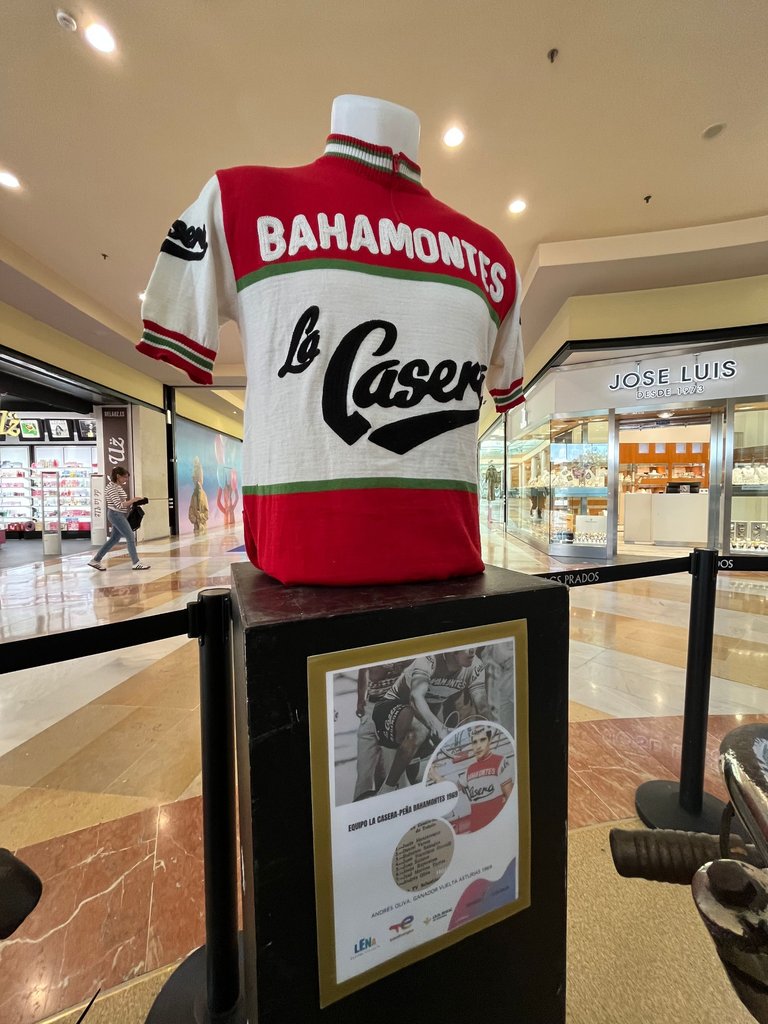
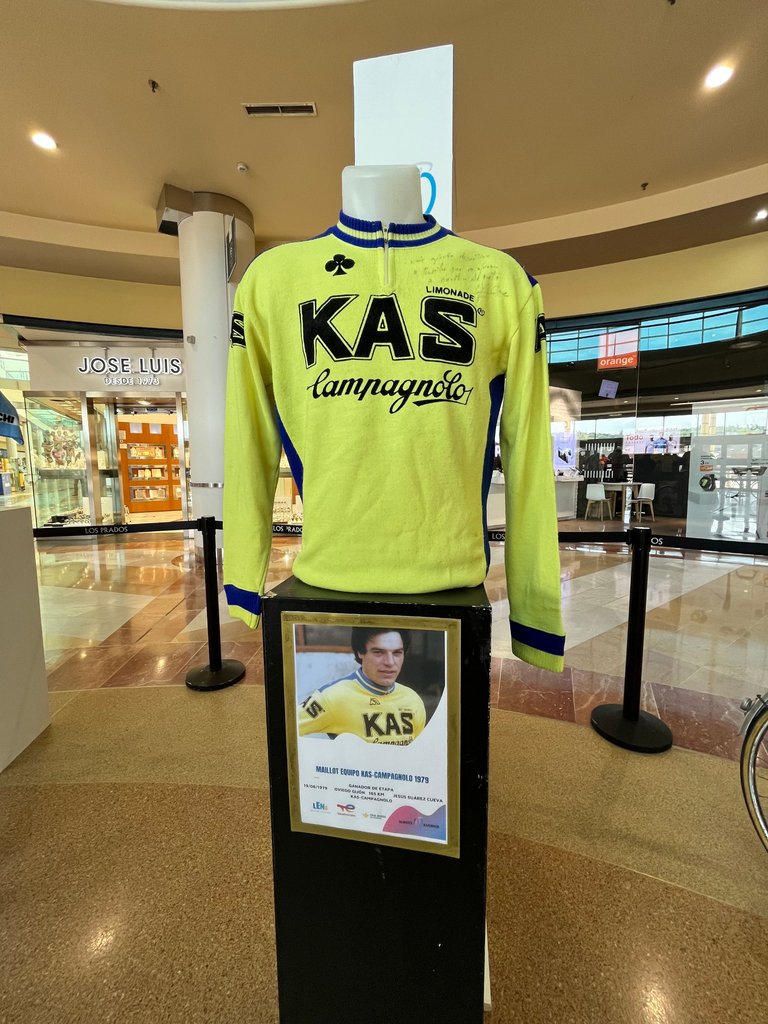
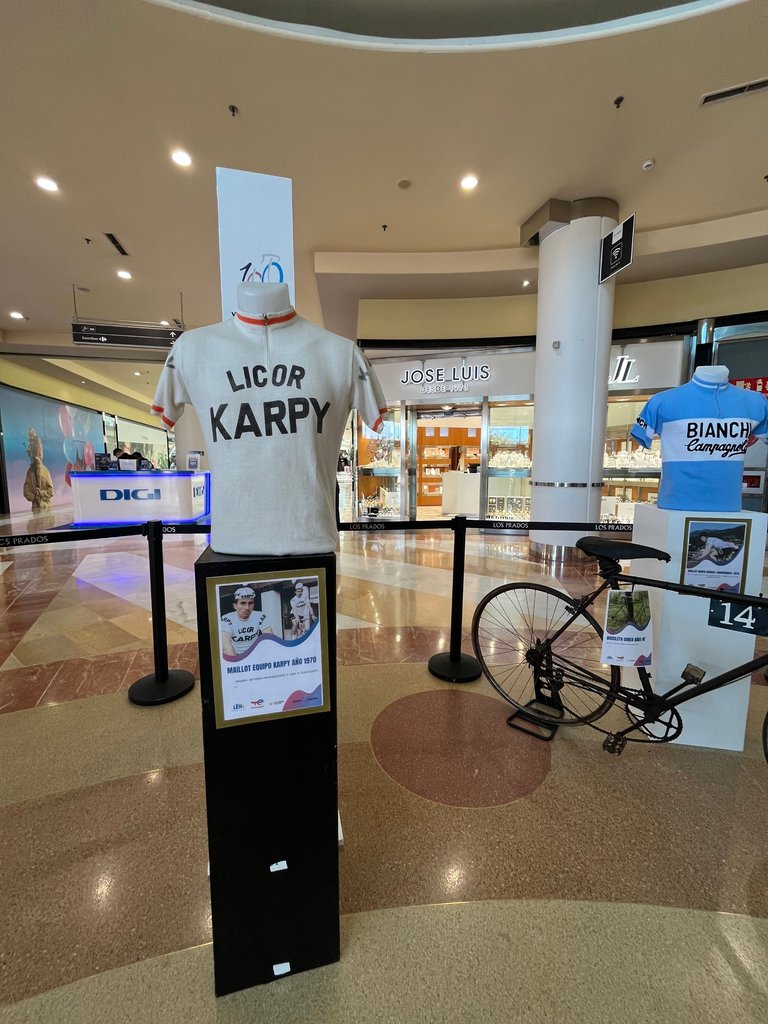
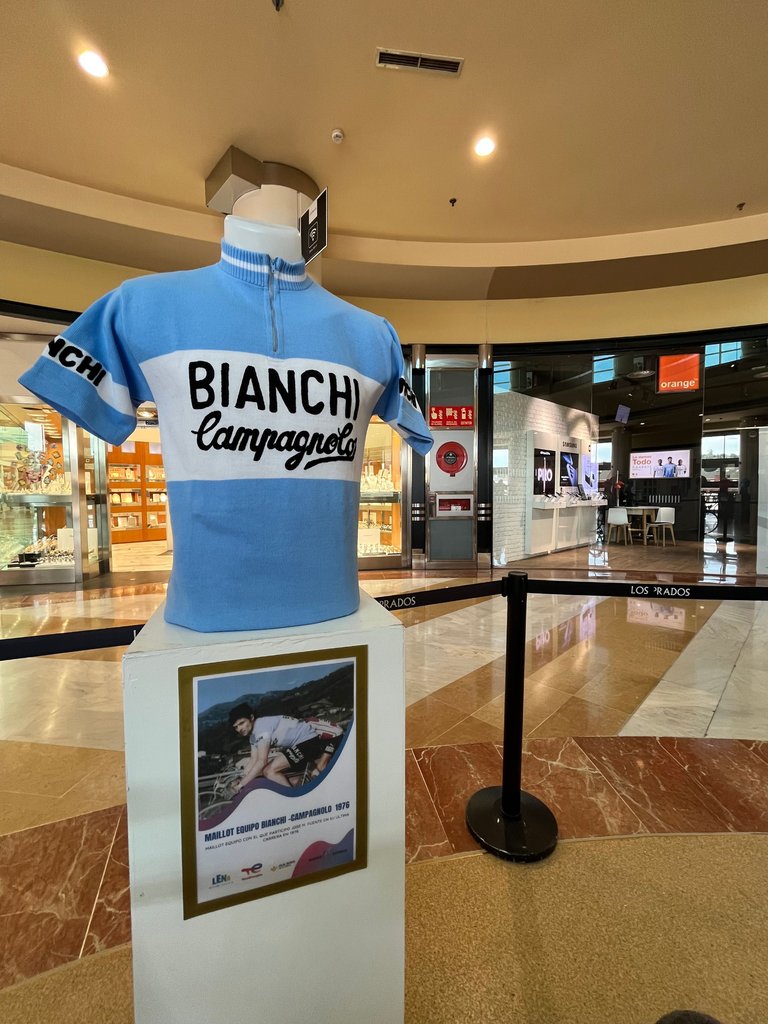
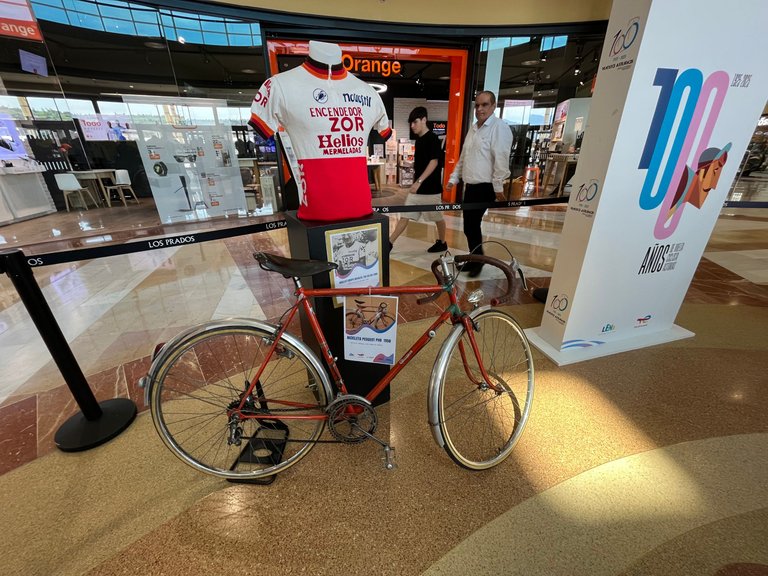
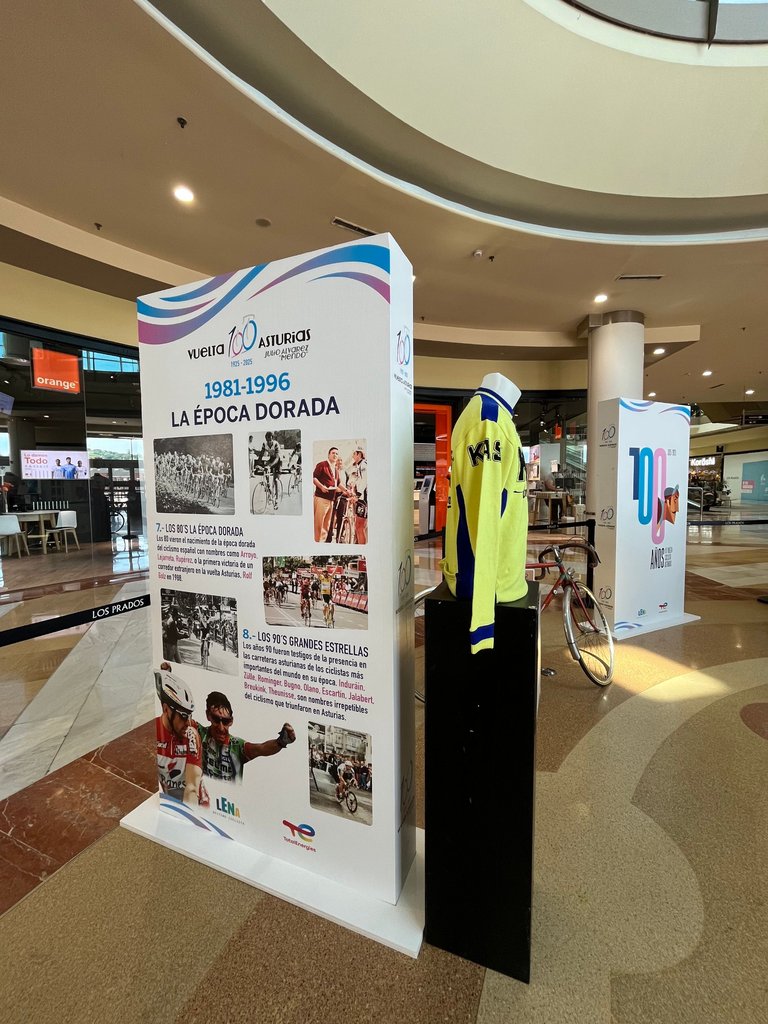
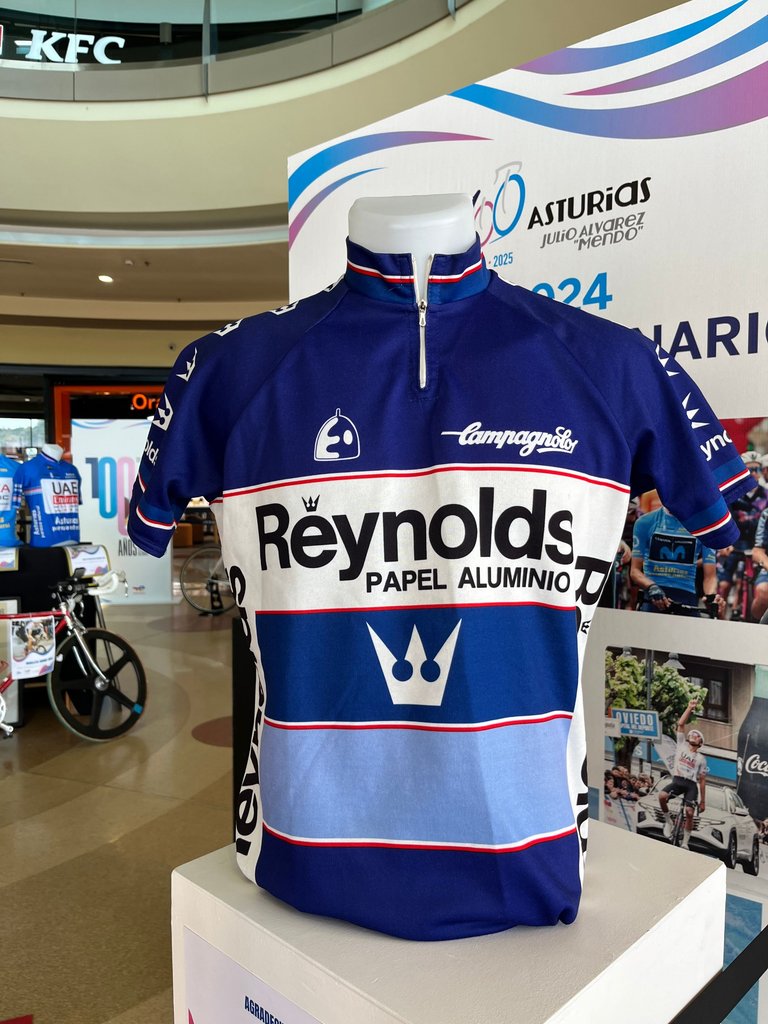
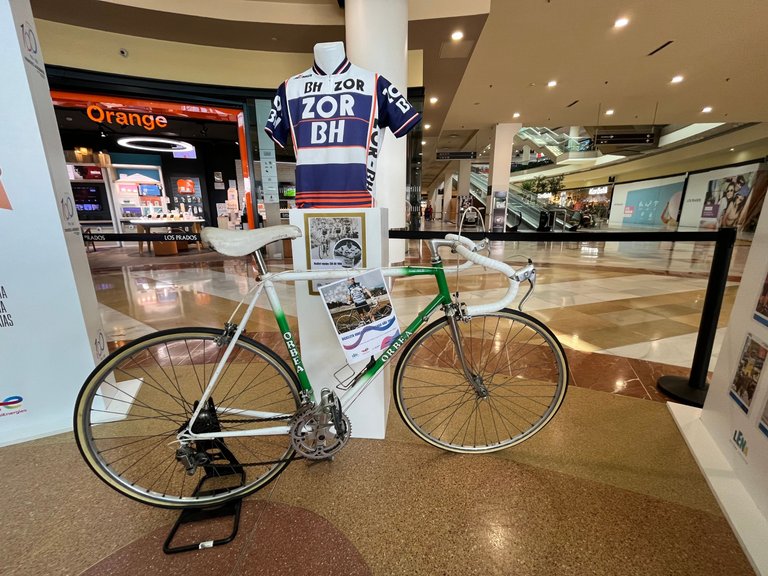
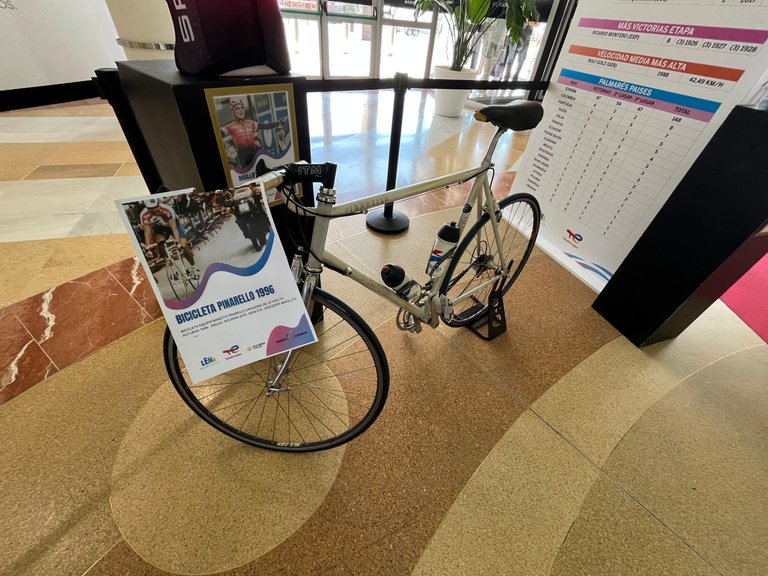
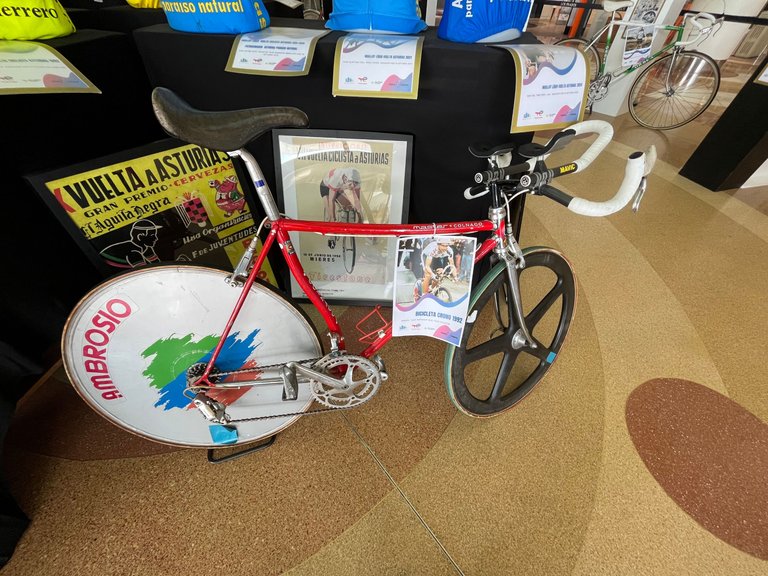

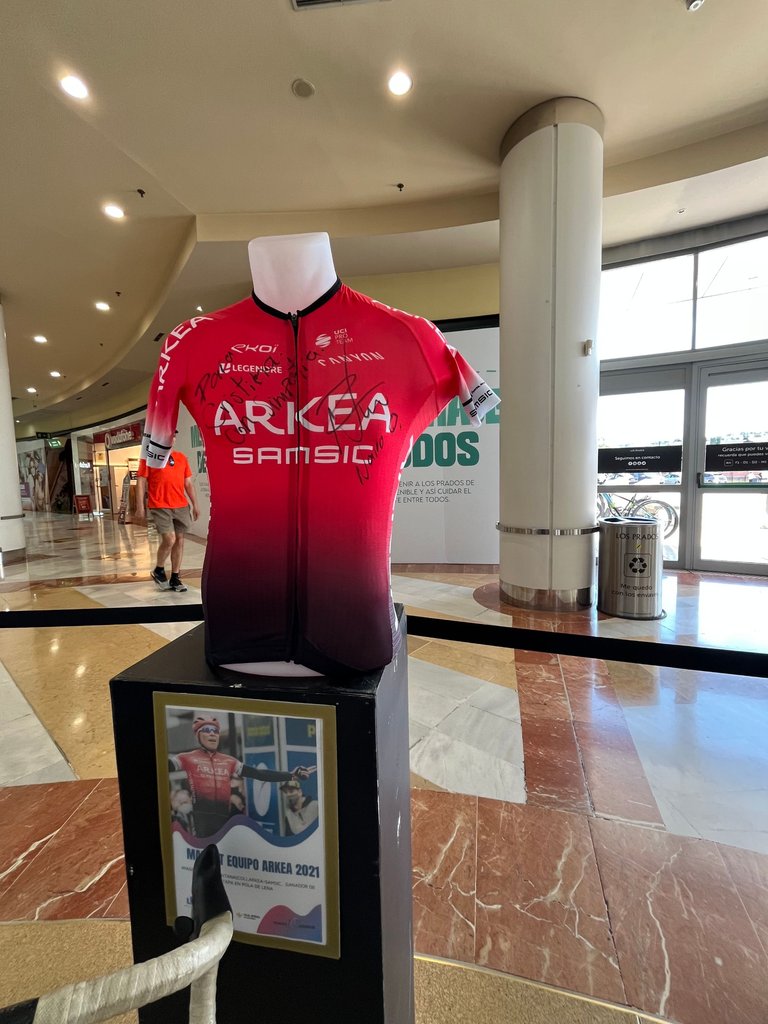
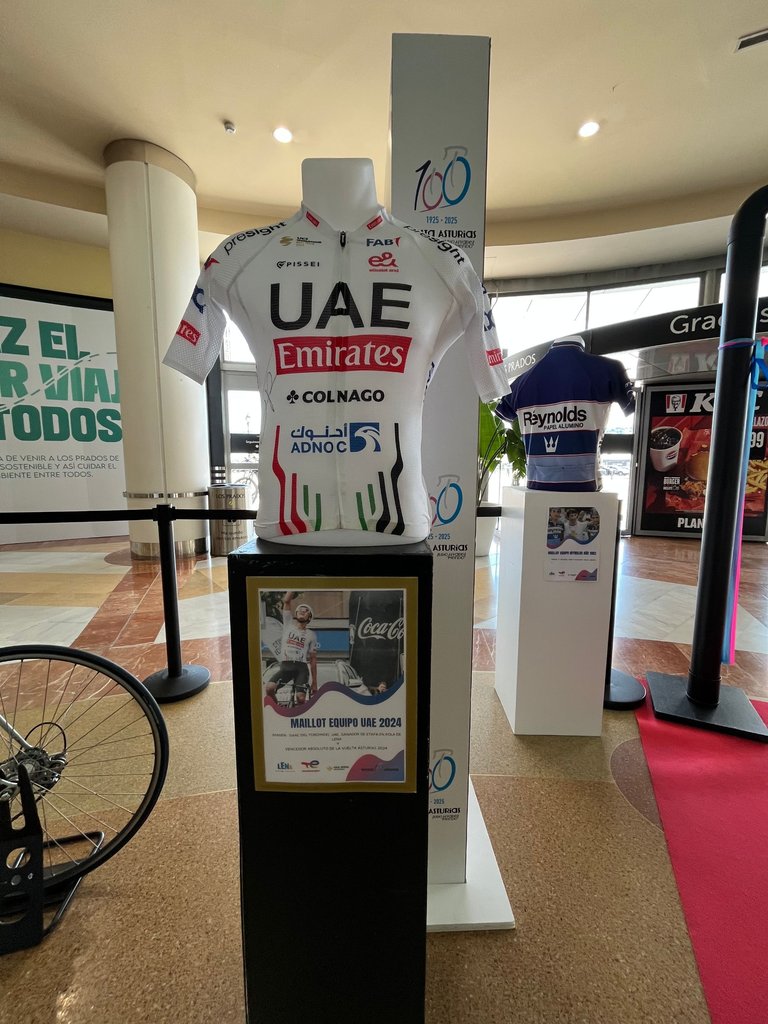
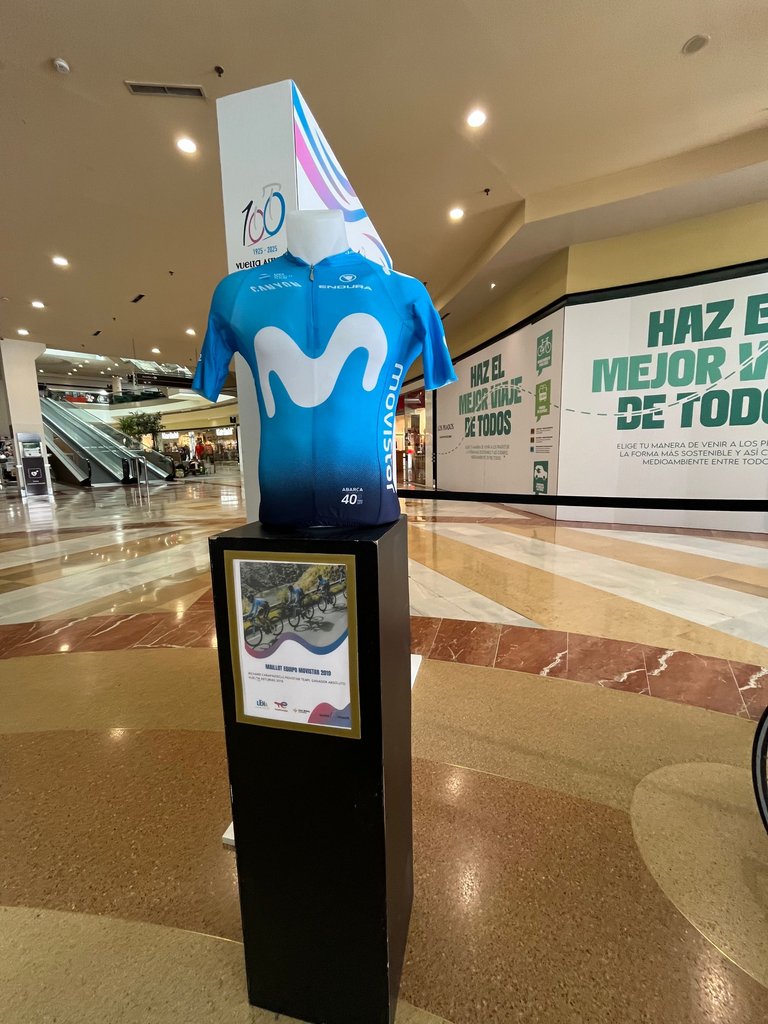
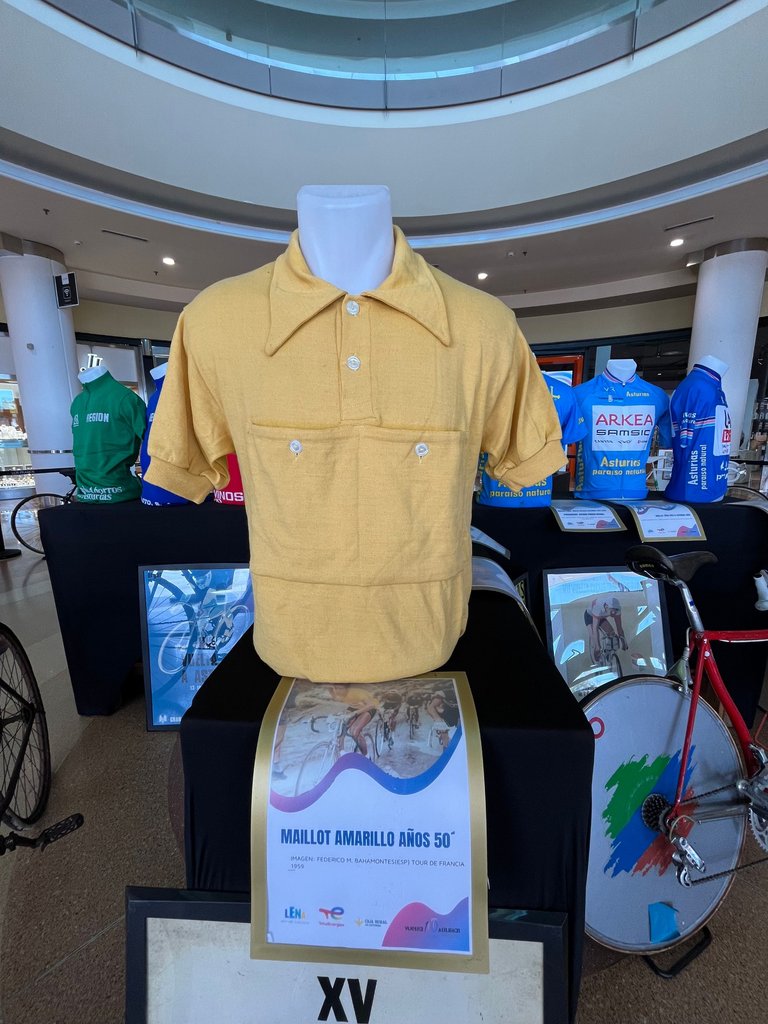
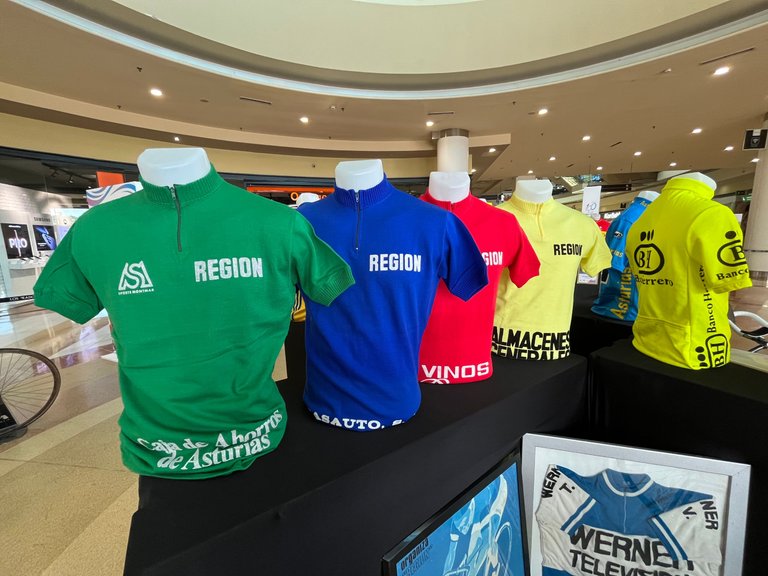
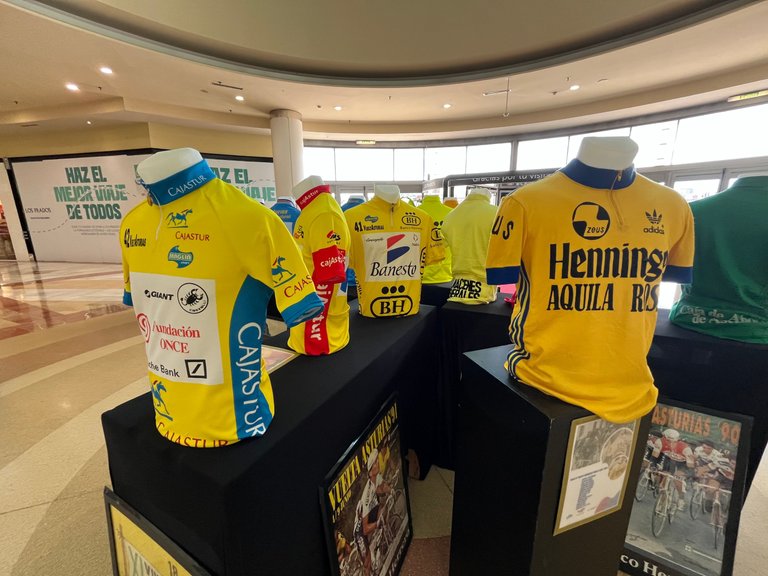
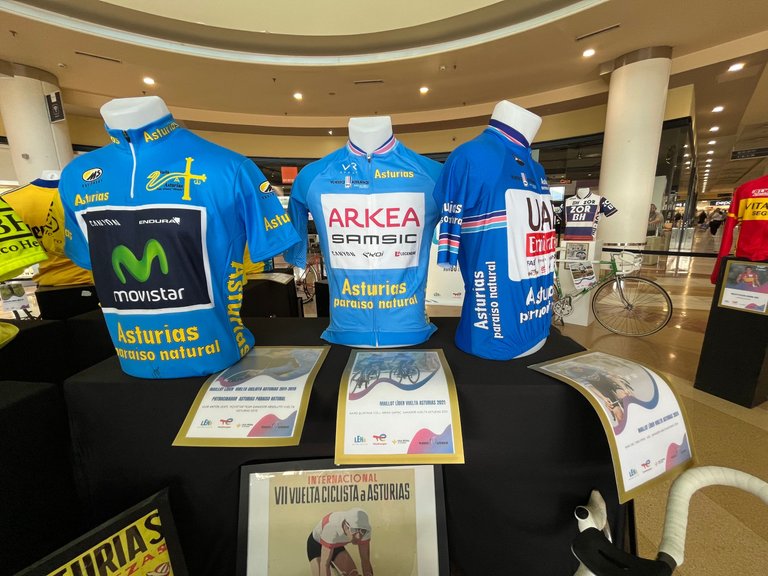
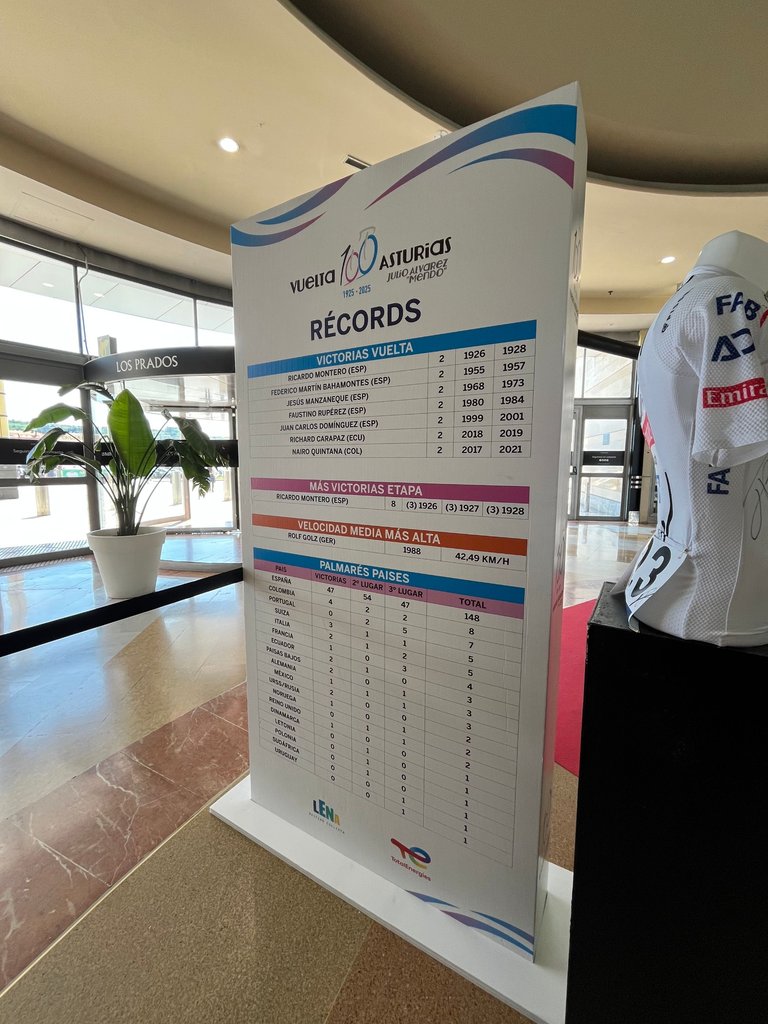
You can check out this post and your own profile on the map. Be part of the Worldmappin Community and join our Discord Channel to get in touch with other travelers, ask questions or just be updated on our latest features.
Wow, that was really amazing, a really amazing exhibition, the place was really nice and really enjoyable, the building had an amazingly interesting design❤️🙏
Thanks for your comment.
!PIZZA
$PIZZA slices delivered:
@castri-ja(1/5) tipped @suarlex
Come get MOONed!
This post was upvoted by the Cycling Community
You can support the Cycling Community by delegating HP
| 25 HP | 50 HP | 100 HP | 250 HP | 500 HP |